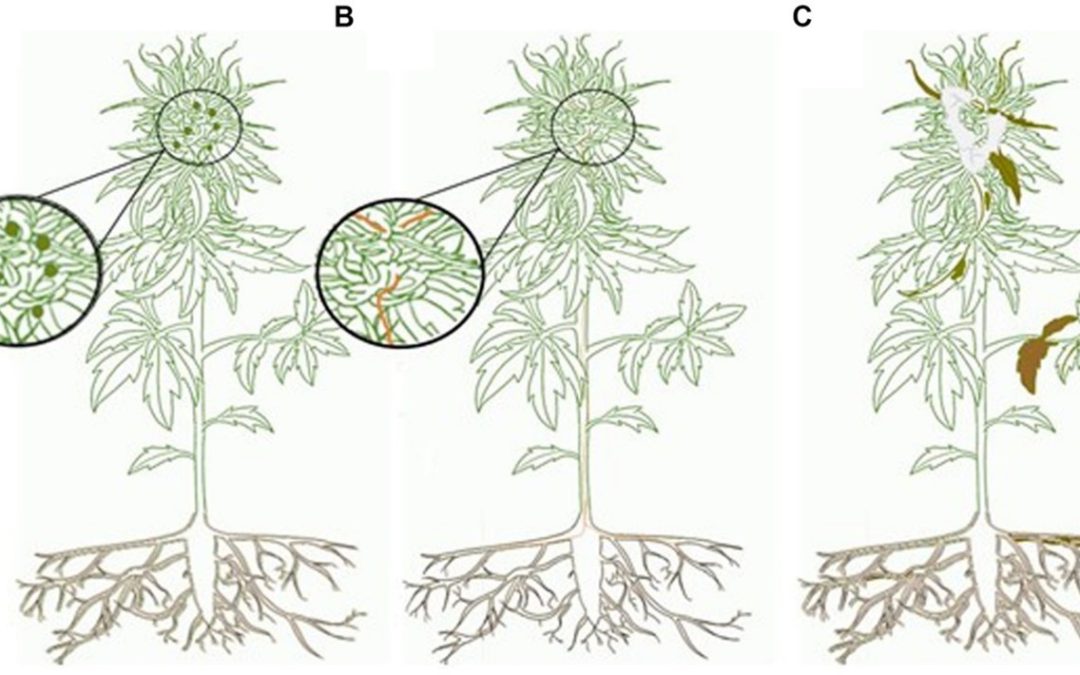The fungal composition of the phytobiome of C. sativa, known as the mycobiome, currently consists of more than 100 species of fungi. The most common ones are Aspergillus, Penicillium, Fusarium, and Mucor spp. The interactions of the mycobiome with cannabis and hemp plants can lead to beneficial, neutral, or harmful outcomes. Similarly, the reverse is true; the chemical composition of the plant can influence the mycobiome.
The mycobiomes of cannabis and hemp are distinguished by their location within the plants and whether they cause visible damage or not.
A. Epiphytes reside and grow inside plant tissues and may or may not cause symptoms.
B. Endophytes reside within plant tissues without causing visible symptoms.
C. Phytopathogens cause visible symptoms and diseases.
The composition of this mycobiome can be influenced by the host plant’s growth stage, external environment, and practices used during production. The floral mycobiome of cannabis and hemp is important because:
- It can affect the quality of the final product.
- It can have an impact on consumer health.
- It may pose regulatory challenges.
Visible fungal growth can occur in cannabis inflorescences before or after harvest. Proper drying of cannabis buds prevents the growth of most fungi.
The species of fungi and yeasts found in cannabis and hemp can be reduced.
- During cultivation. Strategies such as altering environmental conditions, reducing humidity levels, improving air circulation, or proper care by workers can help mitigate fungal and yeast presence.
- Post-harvest. Factors such as the cutting method, drying duration, final moisture content, storage method, duration, and temperature can all influence the reduction of fungi and yeasts during the post-harvest phase.
